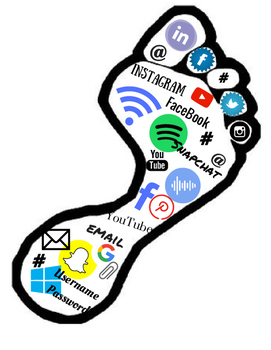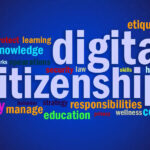
When I think about everything I know about social media and the internet, to me, a digital footprint means the mark, the trace, the “legacy” for lack of a better word, that we leave on the internet. To me, it means our Instagram posts, our tweets, and our Facebook posts, although they may have been deleted, they still exist somewhere on the network, but they are never completely gone. In a sense, I was correct.
According to the Government of Canada website, a Digital Footprint is “a trail of data you create while using the Internet” (Government of Canada, para. 2). It comes from the websites you visit, the pictures you post online, the tweets you share, even from the emails you send. It all contributes to your digital footprint and the mark you are leaving on the world.
When I was in grades 11 and 12, I went to a school that one day brought in a man to present whose name was the “White Hatter”. What this man did was he went to different schools around the lower mainland and Vancouver Island and taught students the importance of internet safety and the impact of our digital footprint. This man demonstrated the ease with which people can track our digital footprints, get into our accounts, even if we have a private account, and what can happen if we are not paying attention to what we post, he explained that even if we post something anonymously, it is never anonymous, there is always a trace. He explained to us that our digital footprint follows us everywhere, no matter how hard we think we scrubbed it, and that future employers can find information or things we may not want them to see if they have the right people looking for the information. For me, this was enough to set me straight and has had a lasting impact on me.
As educators, we need to be mindful of the decisions we make online. The content we are sharing needs to match the professional standards we are being held to, as it is a reflection of us. I am quite active on social media, I have Instagram, Snapchat, Facebook, and TikTok (the bain of my existence), but I am aware of the content that I am posting and the standard I hold myself to.
Within the classroom, it is integral that we educate our students on the impacts of their digital footprints. In an article by Iskandar Mukhametzyanov, he finds that especially now with the emergence of AI, our digital footprints can be used for negative purposes and can create harmful impacts on ourselves and our reputations. We as educators need to teach students to be aware of their digital footprints and that their actions on the internet can always be traced back to them.
Encourage students to be good digital citizens, making good choices, and making sure they remember the repercussions of what they post online.
Citations:
Canadian Centre for Cyber Security. “Digital Footprint (ITSAP.00.133).” Canadian Centre for Cyber Security, Government of Canada / Gouvernement du Canada, 13 Jan. 2022, www.cyber.gc.ca/en/guidance/digital-footprint-itsap00133.
Mukhametzyanov, Iskandar. “Digital citizenship and the student’s digital footprint: Questions of application, promotion and data protection.” Proceedings of the International Scientific and Practical Conference on Computer and Information Security (INFSEC 2021). 2022.






